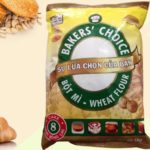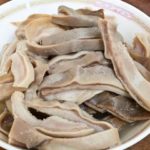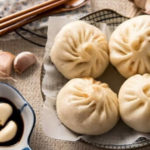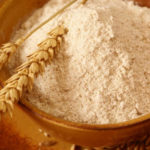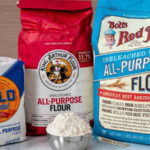There are a variety of flours available on the market that can be used to make Moon Cakes, each with its own unique properties and effects on the final product. Here’s a guide to help you choose the right flour for your Moon Cake creations:
1. Flour for Baked Moon Cakes:
Bread Flour:
Protein Content: 11% – 14%
Bread flour is known for its ability to create a chewy and sturdy texture in baked goods. Even when hydrated, this flour maintains a dry and non-sticky consistency, making it a favorite among bakers. However, when used in Moon Cakes, it can result in a dry and hard texture. To counteract this, it is recommended to mix bread flour with cake flour in a 1:1 ratio. This blend will produce a softer, moister, and more fragrant cake as desired.

All-Purpose Flour:
Protein Content: 10.5% – 11.5%
All-purpose flour is considered a versatile option suitable for a wide range of baked goods, from soft and fluffy cakes to chewy breads. It is also commonly used in cooking and is easily accessible. While you can use all-purpose flour for Moon Cakes, the resulting crust may be slightly hard. However, after two days at room temperature, the crust will soften, becoming more airy and fragrant.

Cake Flour:
Protein Content: 7% – 9%
Cake flour has the lowest protein content among these options, resulting in a fluffy and soft texture ideal for sponge cakes. It has a naturally sweet and mild fragrance, even without the addition of butter or milk. However, it can be tricky to work with. When used in Moon Cakes, the crust may lack hardness and be prone to cracking and difficult to preserve. The best way to utilize cake flour is to mix it with all-purpose flour in a 1:1 ratio, thus combining the strengths of both flours.
The final product will have a soft and moist texture with a firm bite, retaining the sweet and mild fragrance.

Pre-Mixed Moon Cake Flour:
Pre-mixed Moon Cake flour is the most convenient option for first-time bakers as it eliminates the worry of achieving the right softness and taste. Simply follow the instructions provided by the manufacturer and adjust the amount of other ingredients according to your chosen recipe.

2. Flour for Chewy Moon Cakes:
Traditional Flour:
Traditional chewy Moon Cake flour is commonly used in the North of the country. It has a distinctive aroma of roasted rice and is slightly opaque in color. You can easily find this type of flour in grocery stores or shops selling baking ingredients.
 Traditional Flour
Traditional Flour
Sanh Ký Chewy Moon Cake Flour:
Sanh Ký flour is a popular choice in the South of the country. It produces chewy Moon Cakes with a clear and attractive appearance, although the fragrance is not as strong as the Northern version. This flour is also readily available in baking ingredient shops, markets, and supermarkets.
 Sanh Ký Chewy Moon Cake Flour
Sanh Ký Chewy Moon Cake Flour
Chewy Moon Cake Filling Flour:
This type of flour is also made from rice but is used specifically for making fillings, adding a chewy and stretchy texture.
 Chewy Moon Cake Filling Flour
Chewy Moon Cake Filling Flour
With this guide, you can now confidently choose the right flour to create delicious Moon Cakes for your family and friends this season.
What Kind of Flour is Used for Bao Buns? Can Any Flour be Used?
Introducing the ultimate guide to unraveling the mystery behind the delicious Chinese steamed buns, or ‘Banh Bao’ as they are fondly called. Many have wondered about the magic ingredient that goes into creating these fluffy, mouthwatering treats. Is it some elusive, secret flour blend? Well, wonder no more! Today, we lift the lid on the enigma, providing you with all the answers you need and more.
What is Flour? 6 Common Types of Flour for Baking
“Flour, an unassuming yet powerful kitchen staple, takes center stage as one of the most versatile and beloved ingredients. This humble powder, particularly the mighty wheat variety, is the secret weapon for bakers and cooks alike. While flour may seem like a simple, ubiquitous ingredient, there’s more to it than meets the eye. Join us as we delve into the fascinating world of wheat flour, exploring the diverse types and their magical abilities to transform ordinary meals into extraordinary culinary creations. Get ready to elevate your baking game and discover why this unpretentious powder deserves a spotlight in every kitchen realm.”
Select the Perfect Flour for Baking Delights
Introducing the delightful world of Vietnamese baking and its diverse array of treats! From sweet cakes to fluffy bread and savory pancakes, the world of Vietnamese baking is a tantalizing treat for the senses. Each delicacy has its unique character and distinct flavor, but what sets them apart is the type of flour used. Uncover the secrets to choosing the right flour for your favorite Vietnamese treats and master the art of creating delectable delights that follow traditional recipes and taste absolutely divine!

























